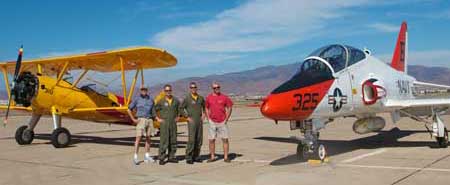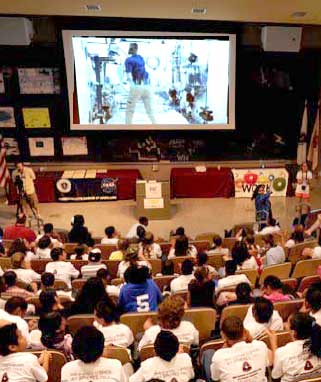
October 2010In this issue:
|
|
|
1. Darmofal to step down, Willcox up, as assoc. department headAfter leading the AeroAstro Department educational programs for the last three years, Professor Dave Darmofal will step down as associate department head next year. Department Head Ian Waitz said, "Dave has been an exceptional colleague and friend — someone whose counsel I depend on for issues big and small. His work on our graduate program, in particular, will have long-lasting benefits for our students and department." Waitz announced that Professor Karen Willcox will be the new associate head. "I can't imagine a better person to fill the role than Karen. Karen is an exceptional scholar and educator. And, through collaborating with her, I have learned firsthand how effective she is as a manager and a leader. I very much look forward to working with her in headquarters," Waitz said. The department joins Professor Waitz in thanking Professor Darmofal for his service and welcoming Professor Willcox to her upcoming position. |
|
|
3. NewsbriefsProfessors Etyan Modiano, Brian Wardle, and Brian Williams have been elected American Institute of Aeronautics and Astronautics Associate Fellows. Professor Paulo Lozano is reappointed as the H.N. Slater Associate Professor of Aeronautics and Astronautics. Professor Karen Willcox was selected to take part in the National Academy of Engineering's Frontiers of Engineering Education this December in California. At the event, early-career faculty members who are developing and implementing innovative educational approaches will share ideas, learn from research and best practice in education, and leave with a charter to bring about improvement in their home institution. The event committee is chaired by Professor Edward Crawley. AeroAstro Professor Deborah Nightingale is the new director of MIT's Center for Technology, Policy, and Industrial Development. CTPID "develops knowledge, advanced technological strategies, and innovative partnerships that address global industrial and policy issues and to provide an enriched environment for MIT faculty and students to pursue their intellectual interests." She is also the Lean Advancement Initiative co-director. The American Institute of Aeronautics and Astronautics has published a new book by Senior Lecturer Rudrapatna Ramnath, "Multiple Scales Theory and Aerospace Applications." Multiple scales theory is a recently developed approach that rests on asymptotic analysis and perturbation theory. The book bridges the gap between esoteric applied mathematics and practical real-world applications. Ram's book is available from AIAA and online booksellers. Former AeroAstroer and current ESD Ph.D. candidate Danielle Wood emails "I was awarded an honor as part of the NASA IT Summit. The award 'recognizes undergraduate/graduate students for their use of technology in inspiring the K-12 and peer community through NASA-related outreach activities and educational interactions.' I serve as a NASA Student Ambassador and participate in a number of NASA student programs. During the IT Summit, I gave a talk about my research on 'Building Technological Capability in Developing Country Satellite Programs.'" Former AeroAstro student Ji-Hyun Yang coauthored a paper that has won the IEEE SMC Society Andrew P. Sage Best Transactions Paper Award for "Detection of driver fatigue caused by sleep deprivation." Ji-Hyun is now a post-doc at the Naval Postgraduate School in Monterey. Another co-author of the paper, Georgia Tech Professor (and former AeroAstro prof) Eric Feron says, " Ji-Hyun is a marvelous success story!" Region 1 (New England) first place winners of the 2010 AIAA Regional Student Conference technical paper competition, undergraduate division, were AeroAstro's Jonathan B. Parham, Matthew Fitzgerald, and Elena de la Rosa Blanco for their paper "Flow Control for Boundary Layer Ingestion in an S-duct Diffuser." "We performed several experiments, physical in the wind tunnel and computational at the GTL, to gauge the performance of a few flow control arrangements in the inlet of the silent aircraft initiatives design," says Parham. "The goal was to make a more uniform pressure distribution at the engine fan-face." "Assessing risks and opportunities of technology infusion in system design," co-written by AeroAstro Professor Oli de Weck, has been rated the most cited paper in the journal Systems Engineering. |
|
|
4. Comings and goingsDr. Kerry Cahoy joins AeroAstro as a Boeing Assistant Professor in July 2011. Cahoy received her BS in Electrical Engineering from Cornell University in 2000, and MS (2002) and PhD (2008) in Electrical Engineering from Stanford University working with the Mars Global Surveyor radio science team. She uses spacecraft radio systems to study the atmospheres and ionospheres of solar system planets. She also is interested in using space-based instrumentation, including cameras, telescopes, and coronagraphs, to search for and characterize planets outside our solar system. Cahoy spent 2006-2008 designing and building geostationary radio-frequency communication satellite payloads at Space Systems Loral, and from 2008-2010 as a NASA postdoctoral research fellow working on exoplanet mission design and simulations at the Ames Research Center. Currently, Cahoy is working with the MIT and Goddard Space Flight Center team on the Gravity Recovery and Interior Laboratory dual-spacecraft mission to the Moon, scheduled to launch in September 2011. Julie Shah also comes to AeroAstro as a Boeing Assistant Professor in July 2011. An AeroAstro alumna, she received her SB (2004) and SM (2006), and will complete her PhD in the fall of 2010. She has developed innovative methods for enabling more fluid human-robot teamwork in high intensity domains, drawing on her expertise in artificial intelligence, human factors, and systems engineering. Shah's research interests include multi-agent coordination, dynamic plan execution under uncertainty, and temporal reasoning. Prior to joining the faculty, she will work with Boeing Research and Development on robotics applications for aerospace manufacturing. Long-time AeroAstro facilities manager Phyllis Collymore is retiring on October 31 after more than 28 years at MIT. Phyllis started with Civil Engineering in February 1982, moving to AeroAstro three months later. She plans to "take painting classes, try to get to the gym at least five days a week, and get my poor yard in shape." Phyllis also may return to AeroAstro on occasion to do temporary work. She will be missed. |
5. Competitions seek student papers on satellites, aviation environmental impactsStudents with an interest in aviation's environmental impact should consider submitting a paper to the Partnership for AiR Transportation Noise and Emission Reduction's (PARTNER) Hartman Paper Competition. Open to undergraduate and graduate students located throughout the world, the contest seeks papers related to aircraft noise and/or emissions reduction. Prizes range from $500 to $2,000. Submission deadline is January 31, 2011. PARTNER is a leading aviation cooperative research organization and FAA Center of Excellence headquartered in MIT AeroAstro. Ph.D. candidate Tatsuya Arai encourages students to enter the Mission Idea Contest, a "500,000-Yen international competition to encourage |
|
6. $30K MIT Lemelson Student Prize comp seeks aspiring inventorsToday's young inventors are tomorrow's technological and entrepreneurial leaders. The $30,000 Lemelson-MIT Student Prize seeks to support a community of inventors at MIT and to recognize and inspire these burgeoning inventors and innovators. The student prize is awarded annually to an MIT senior or graduate student who has created or improved a product or process, applied a technology in a new way, redesigned a system or in other ways displayed a portfolio of inventiveness. Award winners gain invaluable exposure to the science, business and investment communities through national press around this award. Applications for the prize are due by December 10, 2010. |
|
|
7. Anderson lauded by congressmanMidshipman Austin Anderson, an AeroAstro junior, was the subject of a letter to MIT President Susan Hockfield from U.S. Rep. Joe Sestak, D-Penn. Anderson was a summer intern in Sestak's office. Sestak wrote, "(O)n his summer break — following a challenging training cruise aboard the USS Buffalo (SSN 715) — Austin chose to dedicate nearly 60 hours a week as a caseworker responsible for military and veteran's affairs. In that role, he lent counsel and direct support to wounded soldiers and marines of Operations Iraqi Freedom and Enduring Freedom, homeless veterans, widows of World War II servicemen, and unemployed veterans of the Vietnam War. In the process, he developed a case management tracking system that is superior to the ... product used by the House of Representatives. "To date, I have known many young men and women at the United States Naval Academy, Harvard University, White House, Pentagon, and the halls of Congress. None is more decent, dependable, and gifted than Austin Anderson. My sincere appreciation to everyone at (MIT) and the Boston NROTC Consortium for their contribution to the ... development of Austin. The result of your work is unmatched." Well, done, Austin. |
8. Alum wings it in WW2 trainerAlum David Tarr, SM 08, who has been helping School of Engineering alumni remain active with the Institute, emails: "All is going well with my training and me here in South Texas. I am scheduled to go out to the George W. Bush (CVN-77) and qualify to land on the aircraft carrier, after which I will do Air Combat Maneuvering and hopefully earn my wings of gold! "I've attached a photo of me out in San Diego (Brown Muni) after some low-level strike training through Arizona and New Mexico. We happened to meet two gentlemen with a beautiful Boeing-Stearman Model 75 and snapped this photo of two very different generations of Navy tactical trainers. They were gracious enough to let us take it out for a spin — and what a dream! Open cockpit and only the essential gauges. Now that is flying!"
A lucky David Tarr (second from right) got to take the yellow Stearman for a spin. Stearmans were used by the military throughout WW2 as a basic trainer. |
|
If you know of events, honors, activities, or other information you'd like to see in the next issue of AeroAstro enews, please send to wlitant@mit.edu — we'd be pleased to include your submissions. |
|
© 2010 MIT Department of Aeronautics and Astronautics. All rights reserved. |
|
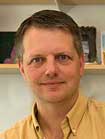
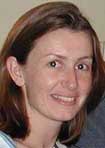
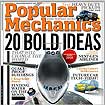
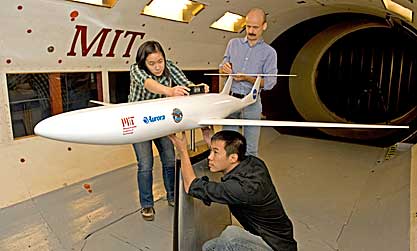
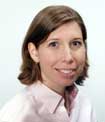

 Austin Anderson
Austin Anderson